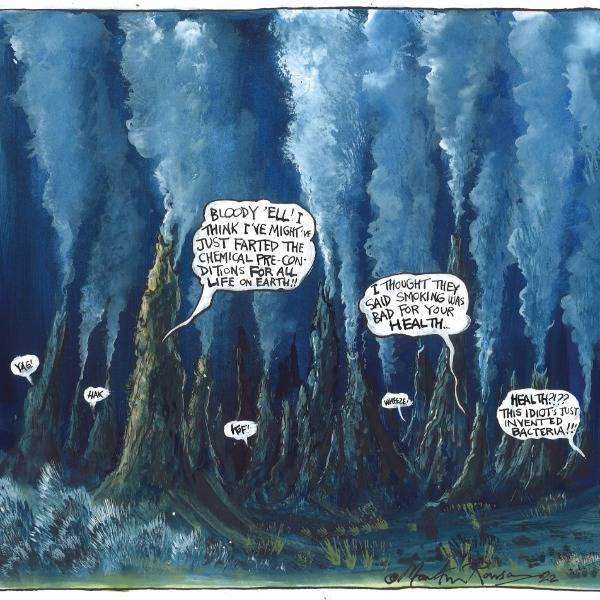This article is a preview from the Summer 2017 edition of New Humanist. You can find out more and subscribe here.
In a galaxy far, far away, at a time when the most complex organism on Earth was a bacterium, two black holes whirled around each other one last time, kissed and coalesced. In an instant, three times the mass of the sun vanished and reappeared as a tsunami of tortured space-time, which propagated outwards at the speed of light. The power in these “gravitational waves” was 50 times greater than the power emitted by all the stars in the Universe put together. Their detection on Earth on 14 September 2015, confirming a prediction of Einstein’s a century before, was an epoch-making development in the history of science – comparable perhaps to Galileo’s invention of the astronomical telescope – and will almost certainly earn the discoverers the Nobel Prize. But it has thrown up a mystery. It concerns the two black holes which created the gravitational waves. Nobody expected to find such monster black holes. In fact, such black holes – one was 36 times the mass of the sun and the other 29 times the mass of the sun – should be vanishingly rare. A black hole is formed when a massive star reaches the end of its life and explodes as a “supernova”. Paradoxically, as the exterior of the star is blasted into space, the core implodes (In fact, it is the energy released in the implosion that drives the explosion). As the core shrinks catastrophically, its gravity becomes ever stronger until, eventually, even light cannot escape and a black hole is born.
But massive stars are unstable and shed a lot of their mass during their lifetimes, and supernovae shed yet more. So, to end up with a black hole of 10 times the mass of the Sun, a star might have started off with 20 or 30 times the mass; and to get ones of about 30 solar masses it might need a star of 100 times the Sun’s mass. The trouble is that such stars are extremely rare. In fact, 70 per cent of stars – known as “red dwarfs” – are less massive than the sun. So how is it possible that we witnessed the merger of two such monster black holes?
One possibility is that the two holes were relics of the first generation of stars to form out of the cooling debris of the Big Bang. Such stars are thought to have been extremely massive. The reason is that, at that time, there were no heavy elements – like the carbon in our cells or the oxygen filling our lungs. These are forged in stellar furnaces, providing the raw material for successive generations of stars. Crucially, such elements form molecules in the gas clouds from which stars are born. These radiate heat, cooling the cloud interiors so that gravity can have its way and crush the gas into stars. In the absence of such molecules, gas clouds cannot shed their internal heat, which means only the most massive gas clumps with the strongest gravity can form stars.
This is why the first generation of stars are thought to have been more massive than stars today, perhaps hundreds of times as massive as the sun. For technical reasons, it would require a first-generation star of about 300 solar masses to explode and leave a black hole of about 30 times the Sun’s mass.
Is it possible, then, that the monster black holes we stumbled on are relics of the oldest stars? That would be like finding two ancient Egyptians still surviving in modern Cairo. It is an exciting idea. But there is another possibility. It concerns the “dark matter”. As I explained last issue (“Don’t say it’s over”, Spring 2017) visible stars and galaxies are outweighed by a factor of six by invisible stuff. This dark matter gives out no light but we know it is there because its gravity tugs on the visible material.
The most popular idea is that the dark matter is made of a hitherto undetected subatomic particle. Speculative theories predict the existence of such particles. However, the Large Hadron Collider near Geneva has failed to find any such particles, and so have dark matter experiments across the world. It does not mean they will not succeed. However, another possibility is that the dark matter is made of black holes – not ones made from stars but ones born in the super-dense conditions in the first split-second of the Big Bang.
Could it be that the merger detected on 14 September 2015 involved two such “primordial” black holes, which have been hanging around for the past 13.82 billion years? If so, the detection would be unprecedented in the history of science for discovering three separate things: gravitational waves, black holes – since previously we had only indirect evidence of their existence – and dark matter.
Marcus Chown’s new book, “The Ascent of Gravity”, is published by Weidenfeld & Nicolson

